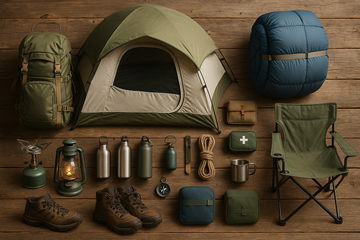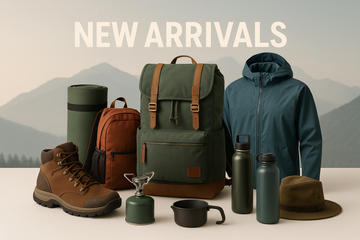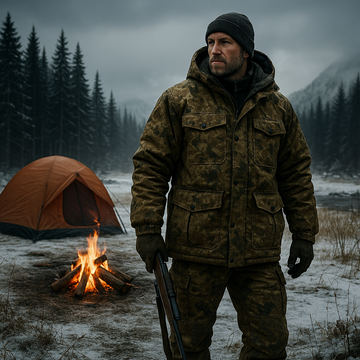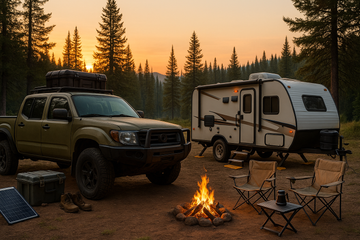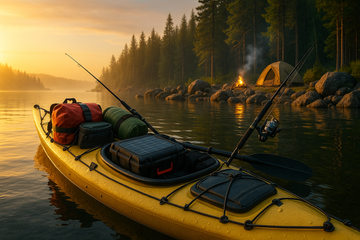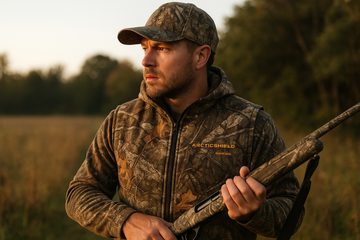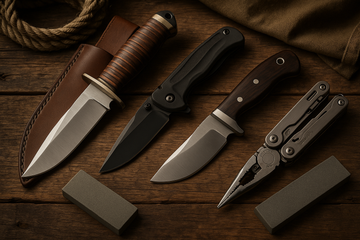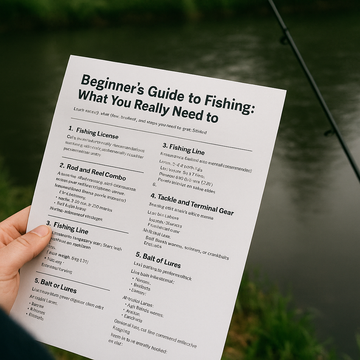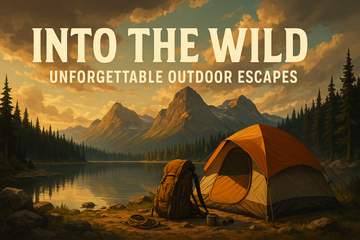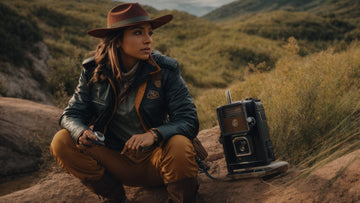Fishing is one of the most accessible and rewarding outdoor activities you can pursue. Whether you’re hoping to spend peaceful mornings by a lake or dream of reeling in your first big catch, getting started with fishing doesn't have to be overwhelming. In this guide, we’ll walk you through the essential equipment, licensing, beginner tips, and practical steps to help you start fishing with confidence and success.
Why Start Fishing?
Stress Relief and Connection to Nature
Fishing is known to reduce stress and anxiety by encouraging mindfulness and slowing down your pace. A 2021 survey by the Recreational Boating & Fishing Foundation (RBFF) revealed that 52% of first-time anglers said fishing improved their mental health.
Accessibility and Affordability
Contrary to popular belief, you don’t need to spend hundreds of dollars to start fishing. A solid beginner setup can cost as little as $40 to $80. Plus, there are countless public lakes, rivers, and ponds available with minimal or no entry fees.
Understanding the Basics: Freshwater vs. Saltwater
Freshwater Fishing
Perfect for beginners. You’ll find freshwater bodies like lakes, rivers, and ponds almost everywhere. It’s ideal for catching species like bass, trout, catfish, and panfish.
Saltwater Fishing
Typically requires heavier gear and more knowledge due to stronger fish and more challenging conditions. It's better suited for more experienced anglers, but pier and surf fishing can still be beginner-friendly.
Step-by-Step: What You Really Need to Get Started
1. Fishing License
In most regions, a fishing license is mandatory. Costs and regulations vary by state or country. Visit your local Department of Natural Resources (DNR) website or use services like TakeMeFishing.org to purchase licenses and review rules.
Pro Tip: Youth under a certain age (often 16) and senior citizens may qualify for discounted or free fishing licenses.
2. Rod and Reel Combo
For beginners, a spinning rod and reel combo is the most versatile and easiest to use. Look for rods labeled “medium” or “medium-light” action.
Recommended Specs:
-
Length: 6 to 7 feet
-
Line weight: 6–12 lb test
-
Reel size: 2000 to 3000 series for freshwater
Trusted Brands for Beginners:
-
Ugly Stik GX2
-
Shakespeare Alpha
-
Pflueger President Combo
3. Fishing Line
Start with monofilament line—it’s forgiving, inexpensive, and easy to handle.
Beginner Tip: Use 8 lb test line for general freshwater fishing.
4. Tackle and Terminal Gear
This includes hooks, weights, bobbers, and swivels. Most beginner tackle kits will include:
-
Assorted sizes of hooks (#6 to #10 are ideal)
-
Split shot sinkers
-
Snap swivels (for preventing line twists)
-
Bobbers or floats
Optional but Helpful Add-ons:
-
Needle-nose pliers
-
Line cutter or small scissors
-
Small tackle box
5. Bait or Lures
You have two main choices: live bait or artificial lures.
Live Bait (Beginner-Friendly):
-
Worms (nightcrawlers)
-
Minnows
-
Crickets
Artificial Lures:
-
Soft plastic worms
-
Spinners
-
Crankbaits
Start with live bait if you're unsure—it's inexpensive and effective for almost all freshwater fish.
Where Should You Fish?
Best Beginner Locations:
-
Local public ponds
-
City park lakes
-
Slow-moving creeks and rivers
-
Fishing piers
Use Google Maps or local fishing apps like Fishbrain or Navionics to discover popular fishing spots near you.
How to Catch Your First Fish: A Simple Process
Step 1: Tie a Hook
Use an easy and strong knot like the Improved Clinch Knot.
Step 2: Add a Bobber and Split Shot
Position the bobber 1–2 feet above the hook and add a small weight 4–6 inches above the hook.
Step 3: Bait the Hook
Thread the worm or bait securely so it doesn't fall off when casting.
Step 4: Cast and Wait
Hold your rod at a 45° angle, reel in the slack, and wait for a bite. When the bobber dips or moves—set the hook by gently lifting the rod.
Beginner Mistakes to Avoid
Choosing the Wrong Gear
Avoid heavy rods or advanced baitcasting reels—they’re harder to use and not necessary when starting out.
Fishing at the Wrong Time
Early morning (sunrise to 10 a.m.) and late afternoon are typically the best times to fish.
Ignoring Local Regulations
Check for species limits, catch-and-release rules, and any size restrictions before fishing.
Fishing Etiquette and Conservation
-
Leave no trace. Pick up trash and discarded fishing line.
-
Follow catch limits. Overfishing affects local populations.
-
Respect others. Give fellow anglers space and keep noise to a minimum.
Budget-Friendly Beginner Fishing Gear Checklist
| Item | Recommended Option | Approx. Cost |
|---|---|---|
| Rod & Reel Combo | Ugly Stik GX2 | $49–$69 |
| Monofilament Line | Berkley Trilene XL (8 lb) | $5–$8 |
| Tackle Kit | South Bend or Plano kits | $10–$20 |
| Live Bait | Worms (from bait shop) | $3–$5 |
| Fishing License | Varies by location | $10–$30 |
| Optional Tools | Pliers, Scissors | $10 |
Best States for Beginner Fishing (USA)
According to RBFF and Outdoor Life, the most beginner-friendly states include:
-
Florida (abundant shore and pier access)
-
Texas (tons of freshwater lakes)
-
Michigan (great for bass and panfish)
-
Minnesota (excellent state parks with lakes)
-
Georgia (low-cost licenses and easy public access)
Final Thoughts: The Joy of Starting Simple
You don’t need to master fishing overnight. The best way to learn is by getting out on the water, trying things out, and asking fellow anglers for tips. With just a basic setup and a little patience, you’ll soon be hooked—pun intended.
Ready to Gear Up?
Explore beginner fishing gear, tackle kits, and affordable rod & reel combos at Outdoors.Supply—your trusted source for fishing essentials. Whether you’re shopping for your first setup or helping a friend get started, our curated collection ensures you're equipped to succeed on your next fishing adventure.
